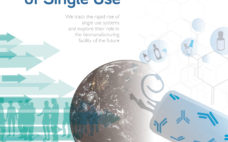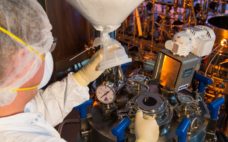Watson-Marlow Fluid Technology Group (WMFTG) has unveiled its innovative Quantum peristaltic pump with patented ReNu single-use (SU) cartridge technology. Engineered by the world leader in peristaltic innovation, Quantum sets the new standard for high-pressure feed pumps in SU tangential flow filtration (TFF), virus filtration (VF) and high-performance liquid chromatography (HPLC). Quantum represents a step-change in pump technology for bioprocessing by enabling higher downstream process yields throughout the pressure range, delivering virtually pulse free linear flow, lowest shear and easy validation…
Wednesday, May 24, 2017 Daily Archives
Globalization of Single-Use and an Introduction to the Mobius® MyWay Portfolio
Single-use systems have enjoyed a meteoric rise in recent years and are fast becoming the go-to option for all but the biggest batches in the biopharma industry. But how do you get the most out of these exciting systems? Here, experts track the rapid evolution of single use systems, their impact on the industry and biomanufacturing, and how they will transform future manufacturing operations. Single-use is now becoming well established into an “age of optimization.” More than 90% of biopharma…
Resin Selection to Optimize the Flexural Strength of Bioprocess Film
Abstract Single-use bioprocess technology offers several advantages for manufacturing biopharmaceuticals, such as increased transportability of fluids throughout the bioprocess workflow and a greater diversity of systems to support specific unit operations, e.g., rocking bioreactors. However, due to the flexible nature of the plastic materials used to construct the single-use containers, the flexural properties of the bioprocess film are critical for performance in such applications. This document focuses on how the resin selection and architecture of a bioprocess film can be…
Single-Use Powder Containment for Biopharmaceutical Manufacturing
For many years, media and buffer ingredients used in powder form were transferred from stock containers using open scoops, weighed and mixed in buckets or open-top bags, and then carried in and dumped from those buckets or open-top bags directly into production vessels—based on the premise that sterility wasn’t required at that early stage of manufacturing. While much of this process was often carried out in a separate room from the production line to contain airborne contaminants, final transfer to…



